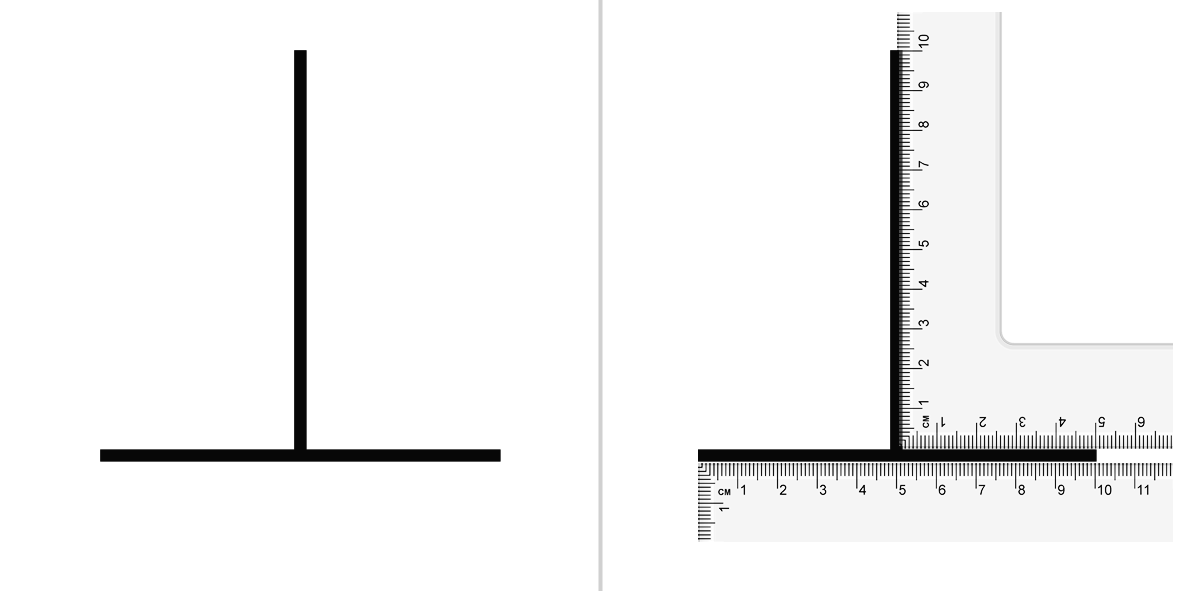Wundt illusion on:
[Wikipedia]
[Google]
[Amazon]
The Wundt illusion is an optical illusion that was first described by the German psychologist Wilhelm Wundt in the 19th century. The two red vertical lines are both straight, but they may look as if they are bowed inwards to some observers. The distortion is induced by the crooked lines on the background, as in the
 Another variant of the Wundt illusion is the '' Horizontal–Vertical Illusion'', introduced by Wundt in 1858. The two intersecting lines are equal in length although the vertical line appears to be much longer. The horizontal line needs to be extended up to 30% to match the perceptual length of the vertical line. This is not confined to simple line drawings, as this can also be seen in buildings, parking meters, as well as other things viewed in a natural setting.
Another variant of the Wundt illusion is the '' Horizontal–Vertical Illusion'', introduced by Wundt in 1858. The two intersecting lines are equal in length although the vertical line appears to be much longer. The horizontal line needs to be extended up to 30% to match the perceptual length of the vertical line. This is not confined to simple line drawings, as this can also be seen in buildings, parking meters, as well as other things viewed in a natural setting.
Orbison illusion
The Orbison illusion (or Orbison's illusion) is an optical illusion first described by American psychologist William Orbison (1912–1952) in 1939.
The illusion consists of a two dimensional figure, such as a circle or square
In Euclidea ...
. The Hering illusion
The Hering illusion is one of the geometrical-optical illusions and was discovered by the German physiologist Ewald Hering in 1861. When two straight and parallel lines are presented in front of radial background (like the spokes of a bicycle), t ...
produces a similar, but inverted effect.
Vertical-horizontal illusion
 Another variant of the Wundt illusion is the '' Horizontal–Vertical Illusion'', introduced by Wundt in 1858. The two intersecting lines are equal in length although the vertical line appears to be much longer. The horizontal line needs to be extended up to 30% to match the perceptual length of the vertical line. This is not confined to simple line drawings, as this can also be seen in buildings, parking meters, as well as other things viewed in a natural setting.
Another variant of the Wundt illusion is the '' Horizontal–Vertical Illusion'', introduced by Wundt in 1858. The two intersecting lines are equal in length although the vertical line appears to be much longer. The horizontal line needs to be extended up to 30% to match the perceptual length of the vertical line. This is not confined to simple line drawings, as this can also be seen in buildings, parking meters, as well as other things viewed in a natural setting.
References
Optical illusions {{Psych-stub